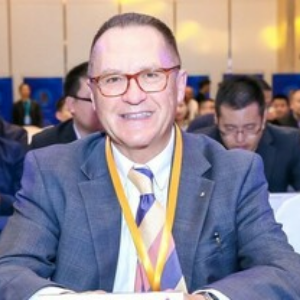Abstract:
Mast cells (MCs) originate from CD34+/CD117+/CD13+ pluripotent hematopoietic stem cells and they express the c-Kit receptor (c-Kit-R) which regulates their proliferation and sustains their survival, differentiation, and maturation. MCs are immune tissue cells derived from bone marrow that are present in all vascularized tissues and play active roles in processes and reactions relating to infection and inflammation. Mast cells are abundant in tissues such as the conjunctiva, uvea, and eyelids, making them critical cells in various ocular diseases. MCs are also involved in innate and adaptive immunity, autoimmunity, and cancer. These cells have a dual role in infection; they can be beneficial for infection by acting as immune cells, or they can cause harm by producing inflammatory cytokines such as tumor necrosis factor (TNF), IL-1, and IL-6. Since MCs release an exaggerated amount of pro-inflammatory cytokines in inflammation, inhibiting the production of MC compounds may represent a promising approach and a new therapeutic strategy that can be complementary to the traditional procedures used today. In infection, MCs can be activated through mRNA and release inflammatory cytokines, without degranulation. MCs can be recruited into inflamed tissue by diverse chemotactic molecules, including vascular endothelial growth factor (VEGF), stem cell factor (SCF), and several CC and CXC chemokines produced by activated immune cells. MCs are known to mediate endothelial cell activation, resulting in inflammatory disorders. The role of MCs in infectious diseases has been extensively studied and reported in the scientific literature and it is of great clinical interest. Here, we report the role of MCs and their generation of inflammatory cytokines in infections and suggest that blocking MC cytokine production by anti-inflammatory cytokines could be a new strategy for therapy.
Biography:
Professor Pio Conti began scientific research in London in 1977 where he worked in the laboratory of Prof. D.A. Willoughby, studying the mechanisms of chronic inflammation. From 1981-1983, he worked in the USA in Washington D.C. at the Immunology Center at Georgetown University, directed by Prof. J.A. Bellanti. In this lab, he studied the eicosanoids and the effect of lymphotoxin on neutrophils in vitro, in collaboration with Prof. Peter W. Ramwell and Dr. Terry W. Williams, the collaborator of G.A. Granger (University of California), the discoverer of lymphotoxin, which was later named tumor necrosis factor (TNF). In 1985, P. Conti and T.W. Williams published an interesting article highlighting that lymphotoxin damages human neutrophils, causing vacuolization and increasing thromboxane. Later, this discovery proved to be the basis for myocardial infarction. In 1984, P. Conti was invited to Boston (USA) to carry out research on the cytokine IL-1 in the laboratory of Prof. Charles A. Dinarello, the purifier and cloner of IL-1 and the discoverer of various cytokines (IL-18, IL-33, IL-37, IL-38, IL-1RA). His work here led to the publishing of a pioneering article on the effects of IL-1 on natural killer cells and tumor killing with J.W. Mier (who discovered IL-2 with Robert Gallo from NIH). From 1985-86, Prof. Conti worked at Harvard Medical School in Boston, where he collaborated with Dr. C.N. Serhan (collaborator of Prof. Bengt I. Samuelsson, Nobel Prize winner), the discoverer of Lipoxins A and B, and published an original paper on the stimulation of lipoxin A on the release of thromboxane by neutrophils. From 1986-2022, he studied the pathophysiology of mast cells at the Molecular Pharmacology and Drug Discovery Laboratory at Tufts University in Boston, directed by Prof. T.C. Theoharides. The studies done in this research center led to the publication of a significant number of articles in the best international scientific journals. From 2009 to today, he has collaborated with Dr. Susan E. Leeman (former Nobel Prize candidate), discoverer of the neuropeptide neurotensin and purifier of substance P. In 2020, during the pandemic, Professor Conti published an article on the damage effects of cytokines released in COVID-19 which obtained many citations (over 2,000).




